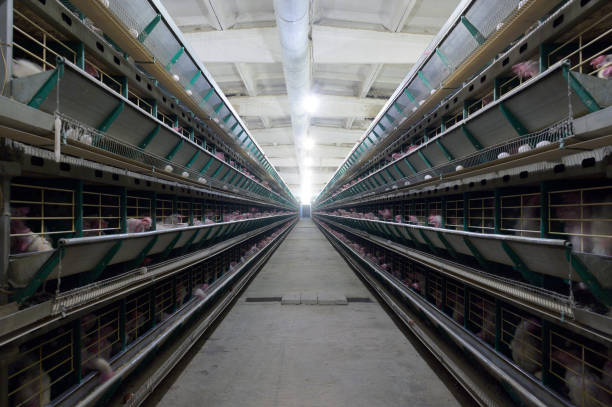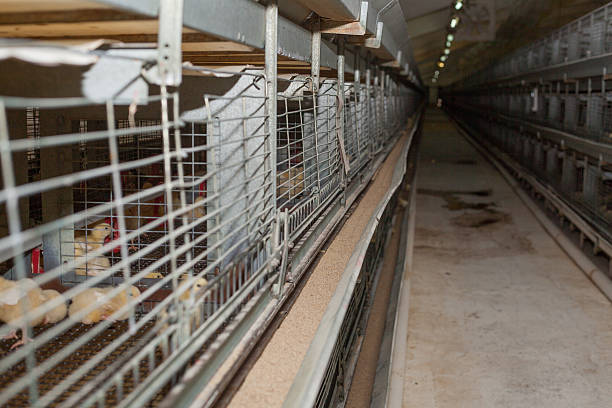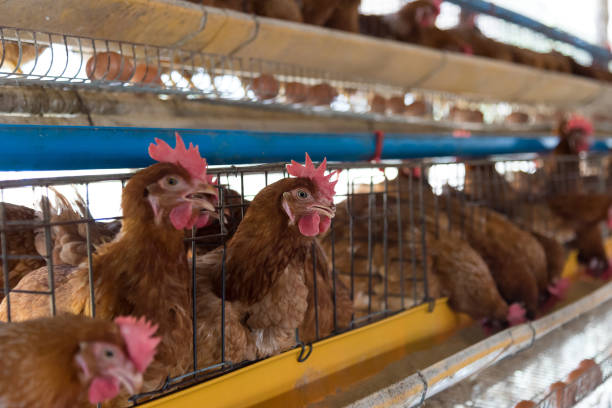Layer Chicken Cage System for 30,000 Birds – Nigeria Solution
Layer Chicken Cage System for 30,000 Birds – Nigeria Solution

Running a large-scale poultry farm in Nigeria? If you’re aiming to house and manage 30,000 laying hens efficiently, then investing in a well-designed layer chicken cage system is not just an option—it’s essential. With rising demand for eggs across Nigerian cities like Lagos, Abuja, and Port Harcourt, farmers are turning to modern, automated solutions to boost productivity while cutting costs. At Livi Mechanical Manufacturing from Zhengzhou, we’ve helped hundreds of African poultry entrepreneurs set up high-capacity egg production farms—and one of the most popular setups we deliver is the 30,000-bird layer cage system tailored specifically for Nigeria’s climate, market needs, and infrastructure.
This isn’t just about stacking more birds into cages. It’s about building a smart, scalable, and sustainable operation that delivers consistent egg output with minimal labor, low feed waste, and excellent bird health. In this article, we’ll walk you through what makes our layer cage system perfect for Nigerian farms, how it works, and why local producers keep choosing Livi as their trusted supplier.
Smart Design Meets Real-World Needs in Nigeria
Setting up a 30,000-bird layer farm sounds big (and it is!), but with the right design, it becomes manageable—even for first-time commercial farmers. Our standard layout splits the flock into multiple A-type three-tier battery cages, arranged side by side in long rows inside a naturally ventilated or tunnel-ventilated poultry house. Each module holds around 150–200 birds, making maintenance and monitoring easy.

What sets our Nigerian solution apart? We build everything with hot-dipped galvanized steel—this means rust resistance even during rainy seasons when humidity hits 85%+. Unlike cheaper painted metal cages that start peeling within months, ours stay strong for over 15 years. And let’s be honest: in Nigeria, where spare parts might take weeks to arrive, durability matters more than ever.
We also customize door heights and aisle spacing so local workers can comfortably collect eggs and clean trays without bending too much—a small detail, but one that reduces worker fatigue and increases daily efficiency. The feeding troughs are wide and evenly distributed, preventing dominant hens from monopolizing food. Watering lines use pressure-compensated nipple drinkers that save water and stop leaks—critical in areas where water supply is irregular.

And because power fluctuations are common across Nigeria, our basic models run on manual feeding and egg collection, while upgraded versions include semi-automatic systems using solar-powered motors. That way, even if the grid goes down, your core operations don’t stop.
Full Lifecycle Support – From Blueprint to Bird Arrival
One thing many new poultry investors overlook is planning beyond the equipment. Yes, cages are important—but so is knowing exactly how the shed should be built, where to place fans and curtains, and how to acclimate pullets before they start laying.
That’s why Livi doesn’t just sell cages—we guide you step-by-step from day one. Our team sends detailed farm layout drawings based on your available land size. Need a 60m x 18m house? Done. Want to add a feed storage room and egg grading area at one end? We include it in the plan.
Before shipping, we conduct factory inspections via video call—you see every weld point, every tray alignment. Once containers leave China, we track them weekly until arrival at Apapa Port or Calabar. Our Nigerian partners help with customs clearance and delivery to your farm site.
When the cages arrive, our technicians can fly in—or train your local crew on installation. We walk through leveling frames, attaching manure belts, connecting water pipes, and checking slope angles on egg rollers. You won’t need engineers; two skilled welders and four laborers usually get the job done in under 10 days.
But we don’t disappear after setup. Through WhatsApp, email, or Zoom, our support team answers questions about vaccination schedules, lighting programs, peak production tips, and troubleshooting odd behaviors in flocks. Think of us as your long-term partner in success—not just another vendor who takes payment and vanishes.
Proven Results Across West Africa
Don’t just take our word for it—farmers across Nigeria are already seeing results. Take Mr. Tunde Ajayi from Ogun State. He replaced his old backyard pens with a 30,000-bird Livi cage system two years ago. Today, his average egg production sits at 94%, meaning nearly 28,000 eggs per day. With automatic manure removal, he sells dried droppings to nearby crop farms as organic fertilizer—adding extra income.
In Kaduna, Mrs. Amina Bello runs an all-women cooperative managing a similar setup. They reduced feed wastage by 18% thanks to controlled feeding channels and started using mobile carts to collect eggs directly from aisles. Their break-even point? Just 14 months after launch.
Even in hotter regions like Kano, where temperatures soar past 40°C, our evaporative cooling pad systems keep sheds below 32°C—well within comfort zone for layers. Add tunnel ventilation and roof insulation, and your hens keep laying steadily even in the dry season.
These aren’t miracle stories—they’re repeatable outcomes made possible by proper engineering, quality materials, and localized advice. Whether you’re expanding an existing farm or starting fresh, a professionally installed layer cage system gives you control, consistency, and confidence.
If you’re ready to turn your vision into reality, now’s the time to act. Click below or send us a message with your farm size, location in Nigeria, and target capacity. Our experts will respond within 24 hours with a free customized quote, 3D layout, and ROI estimate. Let’s build something great—together.




